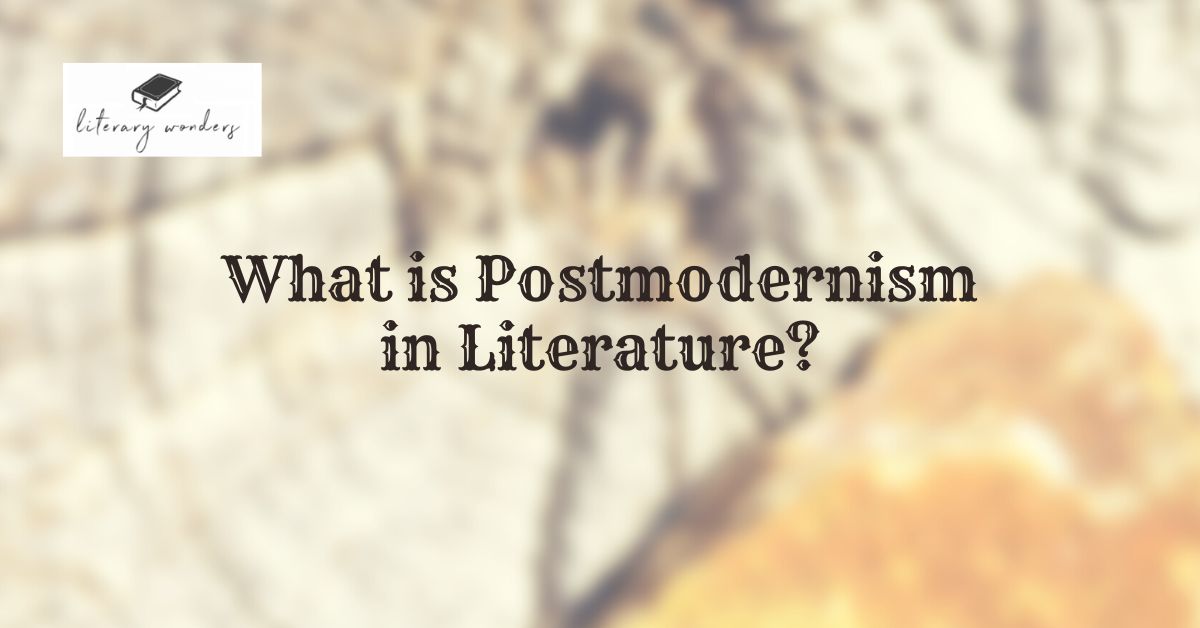Introduction
The term postmodernism can be difficult to define. That’s because it emerged from modernism, and the two are often used interchangeably in literature discussions, criticism, and analysis. Postmodernism encompasses the use of techniques that were pioneered by modernist authors, such as stream-of-consciousness writing and symbolism.
Many literary critics say that we’re still living in a world of postmodernism today, while others believe that it ended years ago when its influence on literature had dissipated completely. Postmodernism in literature started around 80 and 90 and emerged out of modernism. It instantly hit the literary world, spawning different branches and variations within its own context.
However, some simple characteristics make up the core of what defines postmodernism, and here are some examples from the literature that illustrate this aesthetic movement’s essence.
What Is Postmodernism?
Postmodernism emerged as a response to modernist beliefs. It contains the idea that there are no truths, only interpretations. A postmodern work of literature cannot have one correct meaning or performance because of this belief; it has to be interpreted by readers for themselves.
Modern literature was about being modern, and writing about change was in style. Writers thought every novel needed a moral from it- an honest to teach us how to live our lives (this is what people want when they read). Modernist writers also rejected accepted canons of knowledge from church, government, science, or culture. However, this new form of writing doesn’t negate those norms completely. Instead, postmodern literature considers those values but still assumes they are not true.
One way to understand this would be through Jean Baudrillard’s Simulacra and Simulation: The simulacrum is never that which conceals the truth–it is the truth which covers that there is none. The simulacrum presents society’s version of reality, which means we live in reality simulation. Postmodernism rejects any notion of objectivity or transcendent ideas. Rather than one story with many perspectives, all stories share the same perspective.
We see this example in House Made of Dawn by N. Scott Momaday. He tells the story through Tayo and Abel, two different characters’ perspectives, yet all their stories are shared from Tayo’s perspective. We learn who they are and what happened to them based on Tayo’s narration, even though it is just his personal view of things.
Modernist vs. Postmodernist Elements
It has been argued that postmodernist writers, unlike modernists, are not sure about the foundations of their subject matter. They question traditions, literary and otherwise. A La Recherche Du Temps Perdu (In Search of Lost Time) by Marcel Proust depicts what happens when an author-narrator starts to blend real life with art.
He has two distinct moments: one where he seems to be reading his manuscript, but then he sees that it has not been written yet. While another where he describes things as they happen outside his window. Also, he tells what a painter sees inside the room simultaneously. It looks like each medium was fighting for primacy over space or time.
The battle between words and images seems never-ending in this novel. Sometimes, you might feel like you’re watching a movie and then turn the page to find yourself reading again. In others, you might feel stuck in a painting and want to escape into reality because nothing makes sense anymore. Modernism generally subscribes to organic unity. However, postmodernists destroy it on purpose.
Examples of Modernist Fiction
Some of the notable examples of modernist fiction are:
A Christmas Carol by Charles Dickens was first published on December 19th, 1843.
The Lady with the Dog by Anton Chekhov. This piece was first published on October 20th, 1904. Bouvard et Pécuchet
by Gustave Flaubert, which was published in 1881.
The Metamorphosis by Franz Kafka, a German author who died on June 3rd, 1924. His work was published for the first time on July 15th, 1915.
Ulysses by James Joyce, an Irish novelist who lived from February 2nd to January 13th, 1941. His book became available to the public on January 16th, 1922. Other authors, such as Henry James, wrote novels with themes related to postmodernism, such as indirect narration or even the use of characters from other works in their own stories (known as intertextuality).
Examples of Postmodernist Fiction
One example of postmodernist fiction would be the story of The Metamorphosis by Franz Kafka. This story is unique because it uses a style that blends realism with surrealism. In the story, an insect-like creature gets up one morning to find that he has changed into something unrecognizable as a human being. Another would be the popular collection of short stories, The Things They Carried, by Tim O’Brien.
These stories revolve around a Vietnam War veteran. It explores the effects of war on him psychologically and physically while also exploring his moral dilemmas, such as whether or not to kill another person he may have been fighting against. Unfortunately, he tells these stories from memory, so there are discrepancies between what actually happened and what he remembers happening.
What is Metafiction?
Another way to explore postmodern literature is through metafiction, where the author challenges traditional notions of reality, such as challenging our belief that everything written down must be true. For example, in the novel Slaughterhouse-Five by Kurt Vonnegut Jr., many references are made to things like time travel, making it difficult for readers to know if any of this happened or if we’re reading a fictional story about a character who experienced these events.
Another thing that sets postmodern literature apart from modernist literature is its tendency to use humor. An example of this can be seen in Catch-22 by Joseph Heller. There are lots of jokes in this book, which makes it easier for readers to understand some parts that might otherwise seem confusing. One particular joke occurs when the American Army bombs their troops, but they still tell their families back home that they were victorious because nobody ever lost a war.
Suggested Readings

